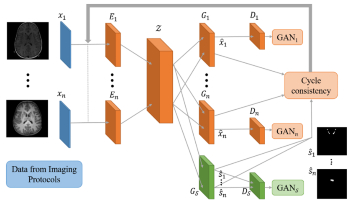Volumetric Stratification of Risk of Vision Loss in Optic Pathway Gliomas
Need:
Optic pathway gliomas (OPGs) are tumors involving the visual system. These tumors can affect hormone production, appetite and sleep, and can cause irreversible vision loss leading to permanent disability.

Solution:
Our team of neuro-ophthalmologists, neuro-oncologists, radiologists and quantitative imaging specialists is developing a novel magnetic resonance imaging (MRI) analysis technology that will accurately identify subtle changes in tumor progression. Our technology will enable identifying impending vision loss, and thereby provide an opportunity for early treatment and preserving vision for children with OPG. The technology incorporates advanced imaging and machine learning methods to provide the first system able to accurately quantify anatomical and structural imaging features of the OPG and of the visual pathway to identify clinically-proven features of vision loss.
Impact:
We demonstrated for the first time that greater OPG volume predicts axonal degeneration, a biomarker of vision loss, and that MRI volumetric measures can stratify the risk of visual loss. In response, the journal Neurology wrote in an editorial that "The future of the care of children with ... OPG seems brighter."
Partners:
- Gilbert Neurofibromatosis Institute
- Children’s Hospital of Philadelphia
- Children’s Hospital Colorado
Funding:
- NIH NCI UH3-UG3CA23653
- DoD NF180067
- Gilbert Family Foundation
